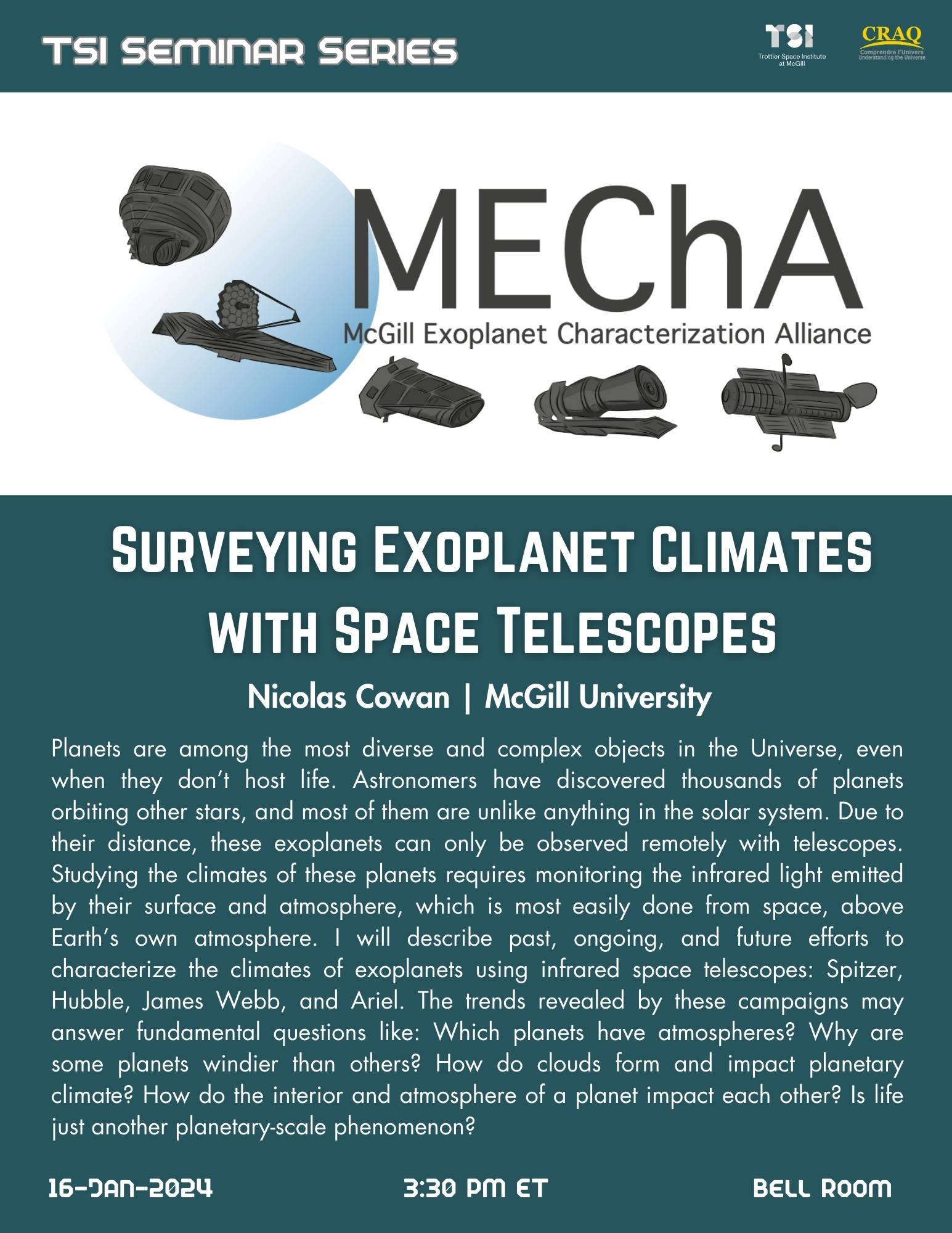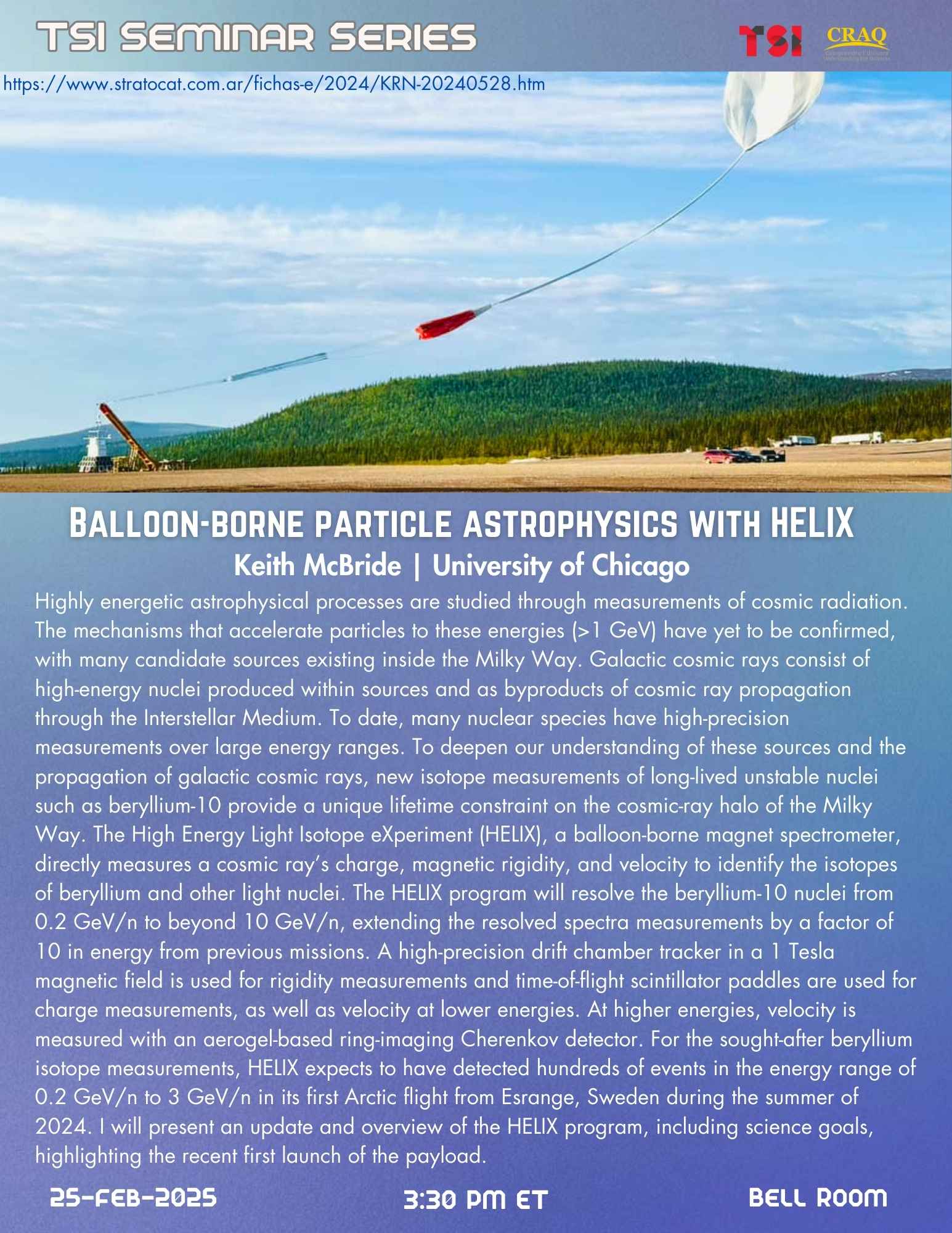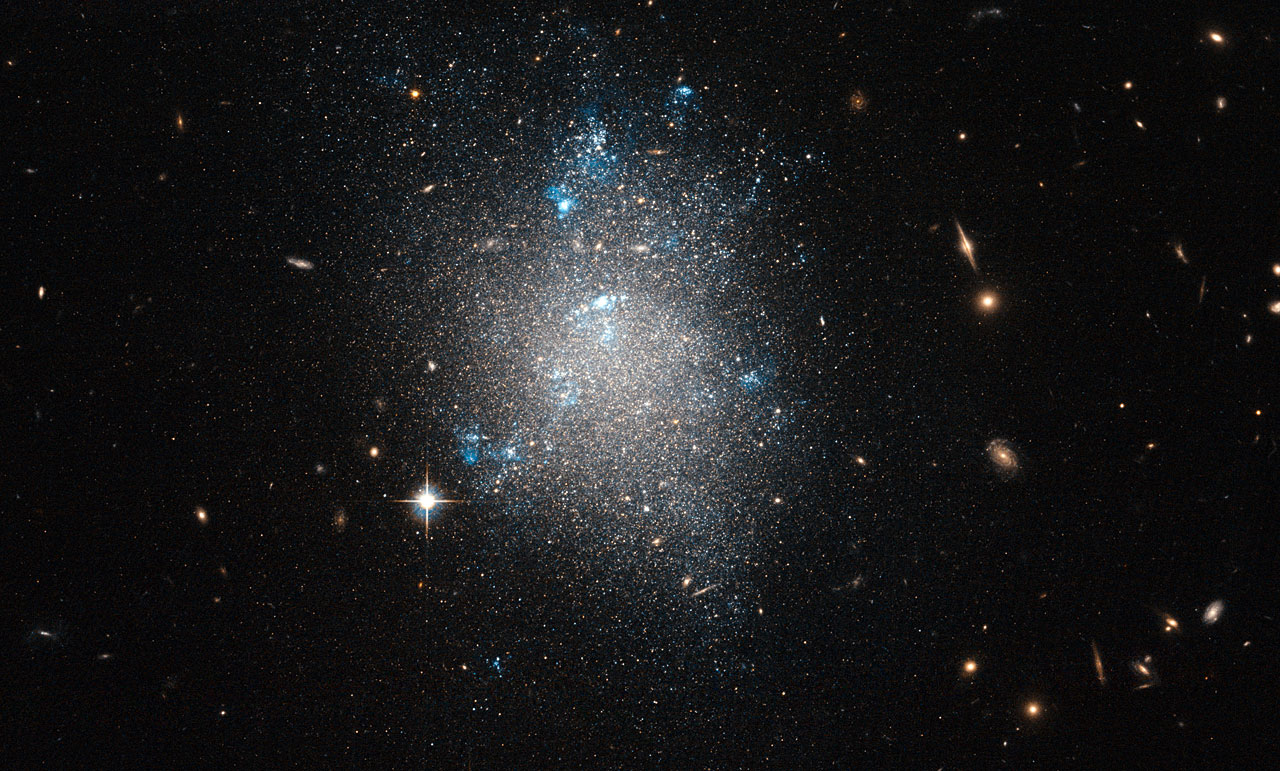Surveying Exoplanet Climates with Space Telescopes
Nicolas Cowan
(TSI and McGill Physics & EPS)
Jan 16, 2024 3:30 PM
Location: Bell Room
TSI
Planets are among the most diverse and complex objects in the Universe, even when they don’t host life. Astronomers have discovered thousands of planets orbiting other stars, and most of them are unlike anything in the solar system. Due to their distance, these exoplanets can only be observed remotely with telescopes. Studying the climates of these planets requires monitoring the infrared light emitted by their surface and atmosphere, which is most easily done from space, above Earth’s own atmosphere. I will describe past, ongoing, and future efforts to characterize the climates of exoplanets using infrared space telescopes: Spitzer, Hubble, James Webb, and Ariel. The trends revealed by these campaigns may answer fundamental questions like: Which planets have atmospheres? Why are some planets windier than others? How do clouds form and impact planetary climate? How do the interior and atmosphere of a planet impact each other? Is life just another planetary-scale phenomenon?




































